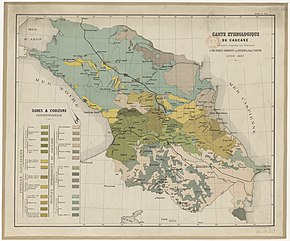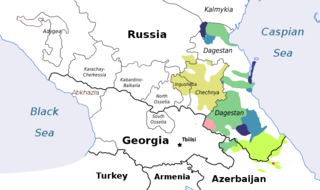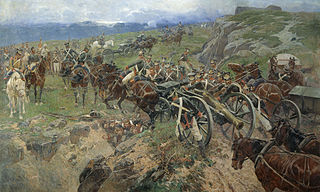
The peoples of the Caucasus, or Caucasians, are a diverse group comprising more than 50 ethnic groups throughout the Caucasus. [2]

The peoples of the Caucasus, or Caucasians, are a diverse group comprising more than 50 ethnic groups throughout the Caucasus. [2]





Caucasians who speak languages which have long been indigenous to the region are generally classified into three groups: Kartvelian peoples, Northeast Caucasian peoples and Northwest Caucasian peoples.
The largest peoples speaking languages which belong to the Caucasian language families and who are currently resident in the Caucasus are the Georgians (3,200,000), the Chechens (2,000,000), the Avars (1,200,000), the Lezgins (about 1,000,000) and the Kabardians (600,000), while outside the Caucasus, the largest people of Caucasian origin, in diaspora in more than 40 countries (such as Jordan, Turkey, the countries of Europe, Syria, and the United States) are the Circassians with about 3,000,000-5,000,000 speakers. Georgians are the only Caucasian people who have their own undisputedly independent state—Georgia. Abkhazia's status is disputed. Other Caucasian peoples have republics within Russia: Adyghe (Adygea), Cherkess (Karachay-Cherkessia), Kabardians (Kabardino-Balkaria), Ingush (Ingushetia), Chechens (Chechnya), while other Northeast Caucasian peoples mostly live in Dagestan.


Caucasians that speak languages belonging to the Indo-European language family:
†Although these two groups do not have any inhabitants physically living anywhere in the Caucasus, genetic tests have proven their affinity to Caucasian populations and shown that their ancestors originated from the Caucasus.
Armenians number 3,215,800 in their native Armenia, though approximately 8 million live outside the republic, forming the Armenian diaspora. Elsewhere in the region, they reside in Artsakh (which is a de facto independent republic, though not recognised internationally), Georgia (primarily Samtskhe–Javakheti, Tbilisi, and Abkhazia), and the Russian North Caucasus. The Ossetians live in North Ossetia–Alania (an autonomous republic within Russia) and in South Ossetia, which is de facto independent, but is de jure part of Georgia. The Yazidis reside in the western areas of Armenia, mostly in the Aragatsotn marz, and in the eastern areas of Georgia. An autonomous Kurdish region was created in 1923 in Soviet Azerbaijan but was later abolished in 1929. Pontic Greeks reside in Armenia (Lori Province, especially in Alaverdi) and Georgia (Kvemo Kartli, Adjara, the Tsalka, and Abkhazia). Pontic Greeks had also made up a significant component of the South Caucasus region acquired from the Ottoman Empire (following the 1878 Treaty of San Stefano) that centred on the town of Kars (ceded back to Turkey in 1916). Russians mostly live in the Russian North Caucasus and their largest concentration is in Stavropol Krai, Krasnodar Krai, and Adygea. Georgia and the former Russian South Caucasus province of Kars Oblast was also home to a significant minority of ethnic (Swabian) Germans, although their numbers have become depleted as a result of deportations (to Kazakhstan following World War II), immigration to Germany, and assimilation into indigenous communities.
Caucasians that speak languages belonging to the Semitic language family:
The Kalmyks — is the name given to the Oirats, western Mongols in Russia, whose ancestors migrated from Dzungaria in 1607. Today they form a majority in the autonomous republic of Kalmykia on the western shore of the Caspian Sea. Kalmykia has Europe's only Buddhist government. [6]
Caucasians that speak languages belonging to the Turkic language family:
The largest of the Turkic-speaking peoples in the Caucasus are Azerbaijanis who number 8,700,000 in the Republic of Azerbaijan. In the Caucasus region, they live in Georgia, Russia (Dagestan), Turkey and previously in Armenia (before 1990). The total number of Azerbaijanis is around 35 million (15 million in Iran). Other Turkic speakers live in their autonomous republics within Russia: Karachays (Karachay-Cherkessia), Balkars (Kabardino-Balkaria), while Kumyks and Nogais live in Dagestan.
This gives ethnic locations about 1775 before the Russians came. [7] NECLS means 'Northeast Caucasian Language Speakers' and NWCLS means 'Northwest Caucasian Language Speakers'. The linguistic nationalities that we now recognise are somewhat artificial. Two hundred years, ago a person's loyalty was to their friends, kin, village and chief and not primarily to their language group. The difference between steppe, mountain and plain was far more important than difference of language. Only the southern half (and the southernmost part of Dagestan) had organized states, usually Persian or Turkish vassals and few, if any, of these states corresponded well to language groups.
Northern Lowlands: The Turkic-speaking Nogai nomads occupied almost all of the steppe north of the Caucasus. In the nineteenth century they were pushed far southeast to their present location. Formerly part of the eastern steppe was occupied by Kalmyks – Buddhist Mongols who migrated from Dzungaria about 1618. In 1771 many returned to their original homeland and they contracted to their present location in the far northeast, Nogais temporarily taking their place. In the southeast were the isolated Terek Cossacks. Their settlements later grew into the North Caucasus Line. There were a few Turkmens in the center of the steppe.
North Slope: The western two thirds was occupied by Circassians – NWCLS divided into twelve or so tribes. They long resisted the Russians and in 1864 several hundred thousand of them were expelled to the Ottoman Empire. To their east were the Kabardians – NWCLS similar to the Circassians but with a different political organization. The term Lesser Kabardia refers to the eastern area. South of the eastern Circassian-Kabardians were three groups that seem to have been driven into the high mountains about 500 years previously. The Karachays and Balkars spoke similar Turkic languages. East of the Balkars were the Ossetians – Iranian speakers descended from the ancient Alans who controlled the future Georgian Military Road and had a growing Christian minority. East of the future highway was a north-south band of Ingush – NECLS similar to the Chechens. The numerous Chechens to the east were later to wage the long Murid War against the Russians. For the small groups south of the Ingush-Chechens see South Slope below. To the east along the coast were the Turkic Kumyks.
Mountain Dagestan: All the peoples of mountain Dagestan were NECLS except the Tats. In the northwest were a number of small language groups (Tsez people (Dido) and Andi people), similar to the Avars. To their southeast were the numerous Avars with a khanate at Khunzakh who fought in the Murid War. Southeast were the Dargins and west of them the Laks who held the Kumukh Khanate. Southeast along the Samur were the Lezgins with many subgroups and then the Iranian-speaking Tats down to Baku.
Caspian Coast: From Astrakhan to the Terek River there were the Buddhist Kalmyk nomads. Along the Terek were the isolated Terek Cossacks. From the Terek to Derbent were the Turkic-speaking Kumyks with a state at Tarki. The town of Derbent itself had a majority Persian (Russian : персы) population, as it had for many centuries, until the late 19th century. [8] On the coastal plain south of Derbent was a mixed population, mostly Azeri ("Transcaucasian Tatar"), and further south to Baku were the Iranian-speaking Tats. When Baku became a boom town the Tats retained a majority only in the mountains. The Mountain Jews, who had a number of villages inland from the coast, spoke a form of Tat called Judeo-Tat. The lowlands south of Baku were held by Azerbaijanis, Turkic-speaking Shiites. On both sides of the current Iranian border were the Iranian-speaking Talysh. Based on genetic studies the Gilaki and Mazanderani ethnic groups in northern Iran (near the Caspian Sea) have been proven to be genetically similar to Armenians, Georgians and Azeris. This indicates that the Gilaki and Mazanderani ethnic groups are people that immigrated from the Caucasus region to what is now northern Iran. [9]
South Slope: Black Sea coast: In the northwest the mountains came down to the sea and the population was Circassian. Southward the coastal plain broadened and the population was Abkhazians – similar to the Circassians but under Georgian influence.
South Slope proper: On the south side of the Caucasus the mountains fall quickly to the plains and there is only a small transition zone. The inhabitants were either Georgians with mountain customs or northern mountaineers who had moved south. The Svans were Georgian mountaineers. In the center the Iranian Ossets had moved south and were surrounded on three sides by Georgians. East of the Ossets and south of the Ingush-Chechens were three groups of Georgian mountaineers on both sides of the mountain crest: Khevi, Khevsurs, and Tushetians. The Bats were NECLS entangled with the Tushetians and the Kists were Chechens south of the mountains. Near the Georgian-Azeri linguistic border there were some Avars and Tsakhurs (Lezgians) who had crossed the mountains. Associated with the Tsakhurs were the Ingiloy or Georgian-speaking Muslims. In the north Azeri area were a few Udis or southern Lezgians and Lakhij or southern Tats.
Southern Lowlands: The western two thirds were occupied by Georgians – an ancient Christian people with a unique language. The eastern third was Azerbaijanis – a group of Turkic-speaking Shiites under Persian influence. On the fringe of the Georgian area were Georgian speakers who had either adopted Islam or mountain customs.
Armenian Highlands: Further South, the land becomes higher. In the west were the Laz people or Georgian Muslims. In Kars province there were Turks, Kurds and Armenians. The Armenians, which gave the plateau its namesake, were somewhat concentrated in the present-day Armenia but were mostly spread out as a minority all over Asia Minor. There were groups of Azeris west of their main area who tended to blend with the Turks. The Kurds were semi-nomadic shepherds with small groups in various places and concentrations in Kars province and Nakhchivan. In the far southeast were the Iranian Talysh.
Language groups in the Caucasus are closely correlated to genetic ancestry. [10]

The Caucasus or Caucasia, is a region between the Black Sea and the Caspian Sea, mainly comprising Armenia, Azerbaijan, Georgia, and parts of Southern Russia. The Caucasus Mountains, including the Greater Caucasus range, have historically been considered as a natural barrier between Eastern Europe and Western Asia.

The Nakh languages are a group of languages within Northeast Caucasian family, spoken chiefly by the Chechens and Ingush in the North Caucasus.
The Nart sagas are a series of tales originating from the North Caucasus. They form much of the basic mythology of the ethnic groups in the area, including Abazin, Abkhaz, Circassian, Ossetian, Karachay-Balkar, and to some extent Chechen-Ingush folklore.
The history of Chechnya may refer to the history of the Chechens, of their land Chechnya, or of the land of Ichkeria.

Circassians are an indigenous Northwest Caucasian ethnic group and nation native to the historical country-region of Circassia in the North Caucasus. As a consequence of the Circassian genocide, which was perpetrated by the Russian Empire in the 19th century during the Russo-Circassian War, most Circassians were exiled from their homeland in Circassia to modern-day Turkey and the rest of the Middle East, where the majority of them are concentrated today. The Unrepresented Nations and Peoples Organization estimated in the early 1990s that there are as many as 3.7 million Circassians in diaspora in over 50 countries.

The Tat people are an Iranian people presently living within Azerbaijan and Russia. The Tats are part of the indigenous peoples of Iranian origin in the Caucasus.

The Caucasian languages comprise a large and extremely varied array of languages spoken by more than ten million people in and around the Caucasus Mountains, which lie between the Black Sea and the Caspian Sea.
The Chechens, historically also known as Kisti and Durdzuks, are a Northeast Caucasian ethnic group of the Nakh peoples native to the North Caucasus. They are the largest ethnic group of the North Caucasus and refer to themselves as Nokhchiy. The vast majority of Chechens today are Muslims and live in Chechnya, a republic of Russia.

Dagestan, officially the Republic of Dagestan, is a republic of Russia situated in the North Caucasus of Eastern Europe, along the Caspian Sea. It is located north of the Greater Caucasus, and is a part of the North Caucasian Federal District. The republic is the southernmost tip of Russia, sharing land borders with the countries of Azerbaijan and Georgia to the south and southwest, the Russian republics of Chechnya and Kalmykia to the west and north, and with Stavropol Krai to the northwest. Makhachkala is the republic's capital and largest city; other major cities are Derbent, Kizlyar, Izberbash, Kaspiysk, and Buynaksk.

The Mountainous Republic of the Northern Caucasus (MRNC), also referred to as the United Republics of the North Caucasus, Mountain Republic, or the Republic of the Mountaineers, was a self-proclaimed state that emerged during the Russian Civil War and operated from 1917 to 1922. It originated from the consolidation of various ethnic groups, including the Circassians, Chechens, Karachays, Ossetians, Balkars, Ingush, and Dagestanis, following the congress of North Caucasian peoples on 6 March.

Grand Principality of Great Kabarda or East Circassia was a historical country in the North Caucasus corresponding partly to the modern Kabardino-Balkaria. It had better political organization than its neighbors and existed as a political community from the fifteenth century until it came under Russian control in the early nineteenth century after the Russo-Circassian War.

A chokha also known as a cherkeska is a woolen coat with a high neck that is part of the traditional male dress of peoples of the Caucasus. It was in wide use among Avars, Abazins, Abkhazians, Eastern Armenians, Azerbaijanis, Balkars, Chechens, Circassians, Georgians, Ingush, Karachays, Nogais, Ossetians, Tats, the peoples of Dagestan, as well as Terek and Kuban Cossacks who adopted it from the aforementioned peoples.

The Russian conquest of the Caucasus mainly occurred between 1800 and 1864. The Russian Empire sought to control the region between the Black Sea and Caspian Sea. South of the mountains was the territory that is modern Armenia, Azerbaijan, Georgia, and parts of Iran and Turkey. North of the mountains was the North Caucasus region of modern Russia. The difficult conquest of the intervening mountains is known as the Caucasian War. Multiple wars were fought against the local rulers of the regions, as well as the dominant powers, the Ottoman Empire and Qajar Iran, for control. By 1864 the last regions were brought under Russian control.

Circassian nationalism is the desire among Circassians worldwide to preserve their culture, save their language from extinction, raise awareness about the Circassian genocide, return to Circassia and establish a completely autonomous or independent Circassian state in its pre-Russian invasion borders.
Balkar and Karachay nationalism is the national sentiment among the Balkars and Karachai. It generally manifests itself in:

The Terek Oblast was a province (oblast) of the Caucasus Viceroyalty of the Russian Empire, roughly corresponding to the central part of Russia's North Caucasian Federal District. Тhe оblast was created out of the former territories of the North Caucasian Peoples, following their conquests by Russia throughout the 19th century. The Terek Oblast bordered the Astrakhan and Stavropol governorates to the north, the Kuban Oblast to the west, the Kutaisi and Tiflis governorates to the south, and the Dagestan Oblast to the east. The administrative center of the oblast was Vladikavkaz, the current capital of North Ossetia–Alania within Russia.

The Khasavyurtovsky okrug was a district (okrug) of the Terek Oblast of the Caucasus Viceroyalty of the Russian Empire. The area of the Khasavyurtovsky okrug made up part of the North Caucasian Federal District of Russia. The district was eponymously named for its administrative centre, Khasavyurt.